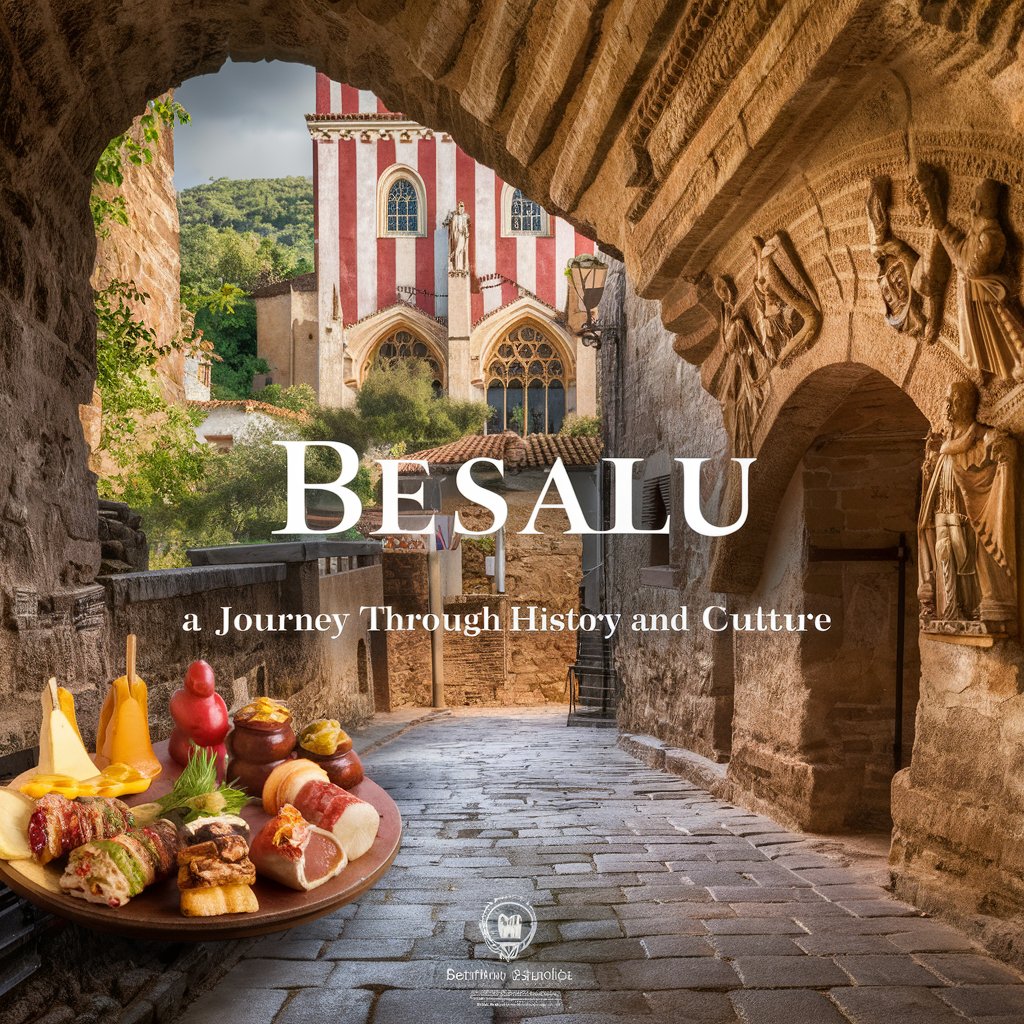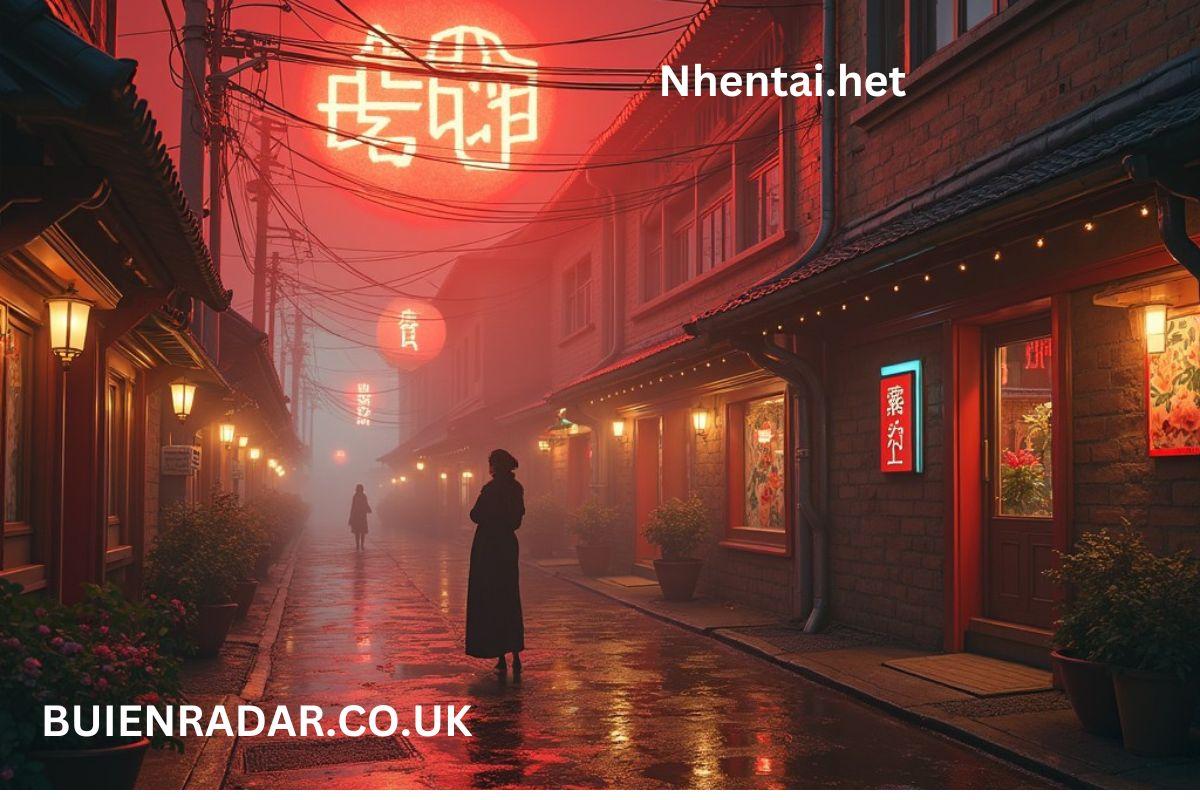Nestled in the heart of Catalonia, Besalu is a captivating town that feels like stepping back in time. With its medieval charm and rich history, this picturesque destination draws visitors from around the globe. Cobblestone streets wind through ancient architecture, inviting you to explore every nook and cranny. The stunning Romanesque bridge spanning the Fluvià River offers breathtaking views and serves as a gateway to discovering Besalu’s storied past.
As you wander through this enchanting village, you’ll encounter remnants of bygone eras—each corner revealing tales of conquests, traditions, and cultural influences that have shaped its identity over centuries. From historical landmarks to vibrant local celebrations, Besalu is more than just a place; it’s an experience waiting to unfold for those eager to delve into its treasures. Whether you’re a history buff or simply seeking an unforgettable adventure infused with culture and gastronomy, Besalu has something special for everyone who sets foot on its charming soil.
A Look into the History of Besalu
Besalu’s history is a rich tapestry woven with threads of diverse cultures. This picturesque town has roots tracing back to the Roman era, where it served as an important settlement. The remnants of ancient architecture still whisper tales of its glorious past.
As time passed, Besalu blossomed during the medieval period and became a significant political center. Its strategic location made it vital for trade and defense against invaders. The iconic bridge, constructed in the 12th century, stands testament to this era’s ingenuity.
The Jewish community also thrived here, leaving behind a remarkable legacy marked by their influence on commerce and culture. Their presence is celebrated through well-preserved sites like the ancient Mikveh.
Every cobblestone street in Besalu tells stories that span centuries, offering visitors a glimpse into its evolution from a fortified village to a vibrant historical gem in Catalonia.
Exploring the Cultural Influences in Besalu
Besalú stands as a testament to the blend of cultures that have shaped its identity. The town reflects centuries of influences from Roman, Jewish, and Catalan heritages. Each layer adds depth to its cultural tapestry.
Walking through Besalú’s streets, you can sense this rich history in every stone and structure. The architecture showcases Gothic elements intertwined with medieval motifs, creating an enchanting visual narrative.
Jewish culture has left a profound mark on Besalú. The remnants of the ancient mikveh speak volumes about its once-thriving community. This historical footprint is evident during festivals where traditions are celebrated with fervor.
Artisans craft unique items using age-old techniques passed down through generations. Their work embodies not just skill but also a connection to the land’s storied past.
Every corner invites exploration and appreciation for how diverse influences coexist harmoniously within this captivating town.
Top Tourist Attractions in Besalu
Besalu is a treasure trove for history enthusiasts and casual travelers alike. The iconic medieval bridge, with its impressive arches, serves as the gateway to this enchanting town. Strolling across it feels like stepping back in time.
The Church of Sant Pere stands majestically at the heart of Besalu. Its Romanesque architecture captivates visitors with intricate carvings and stunning stained glass windows that tell stories from centuries past.
Don’t miss the Jewish Quarter, where you can wander through narrow cobblestone streets lined with ancient buildings. Here, remnants of a rich cultural heritage are beautifully preserved.
For those intrigued by history’s mysteries, the ruins of an ancient castle offer panoramic views that are simply breathtaking.
Each corner reveals something new—art galleries showcasing local talent or quaint cafes inviting you to relax and savor traditional Catalan pastries.
The Gastronomic Delights of Besalu
Besalu is a treasure trove for food lovers. The town’s culinary scene reflects its rich history and vibrant culture.
Local markets brim with fresh produce, cheeses, and cured meats. Traditional Catalan dishes showcase the region’s flavors, from hearty stews to delicate pastries. Each bite tells a story of tradition and celebration.
Don’t miss trying “escalivada,” a smoky grilled vegetable dish drizzled with olive oil. Pair it with some local bread topped with “allioli,” a garlic mayonnaise that adds zest to any meal.
For dessert, indulge in “crema catalana.” This creamy custard topped with caramelized sugar will leave you wanting more.
Dining in Besalu is not just about food; it’s an experience steeped in history. Enjoy meals at charming restaurants nestled within medieval walls or on rustic terraces overlooking picturesque views. Each meal becomes part of your journey through this enchanting town.
Outdoor Adventures in Besalu
Besalu offers a playground for outdoor enthusiasts. The surrounding nature is breathtaking, with lush green hills and winding rivers inviting exploration.
Hiking trails cater to all skill levels. Whether you’re seeking a leisurely stroll or an invigorating trek, the paths reveal stunning vistas at every turn.
Cycling through the countryside adds another layer of excitement. With well-marked routes, cyclists can enjoy fresh air while soaking in the beauty of Catalonia’s landscapes.
For those who crave water activities, kayaking on the nearby rivers provides both thrill and tranquility. Paddling along scenic waterways allows adventurers to connect with nature intimately.
Wildlife lovers will appreciate spotting various species native to this region as they explore its rich biodiversity. Each outing becomes a chance to witness something extraordinary amidst Besalu’s captivating natural backdrop.
Preserving and Celebrating the Heritage of Besalu
Besalu is a living canvas of history. The town’s residents take pride in preserving its rich heritage, ensuring that past and present coexist harmoniously.
Restoration projects breathe new life into ancient structures, maintaining their authenticity while welcoming visitors to explore the stories they hold. The iconic Romanesque bridge stands as a testament to this commitment, attracting photographers and history enthusiasts alike.
Local festivals play an essential role in celebrating Besalu’s traditions. Events like the Medieval Market transport attendees back in time with vibrant crafts, music, and performances steeped in local lore.
Cultural workshops offer hands-on experiences for those eager to learn traditional crafts such as pottery or weaving. These initiatives foster community spirit and keep age-old techniques alive.
As you wander through the cobbled streets, whispers of history beckon from every corner—each stone tells a tale waiting to be discovered by curious minds.
A Medieval Marvel: The Legacy of Besalu
Besalu stands as a testament to the medieval era, with its remarkable architecture and rich tapestry of history. The town’s pride lies in its stunning Romanesque bridge, an iconic structure that elegantly spans the River Fluvià.
Wander through cobblestone streets lined with ancient buildings, where each stone whispers tales of yesteryears. The remnants of fortified walls speak volumes about Besalu’s strategic importance during turbulent times.
Art and culture flourished here under diverse influences—Jews, Christians, and Muslims coexisted harmoniously. This blend is evident in the intricate carvings found on churches like Sant Pere and Santa Maria.
As you explore this enchanting town, you’ll feel transported back to an age when knights roamed freely and artisans crafted their masterpieces by hand. Each corner reveals glimpses into a storied past that continues to captivate visitors today. Besalu truly embodies the spirit of medieval marvels waiting to be discovered.
Walking Through Time: Exploring Besalu’s Historic Streets
Wandering through Besalú feels like stepping into a living history book. Each cobblestone street whispers tales from centuries past, inviting you to explore its rich narrative.
The medieval architecture captivates with its arches and stone facades. As you stroll, the scent of aged wood mingles with the crisp air, creating an atmosphere steeped in authenticity.
Venture down narrow alleyways where sunlight dances on ancient walls. You’ll discover hidden squares adorned with charming cafes and artisan shops brimming with local crafts.
Every corner holds a story—a Gothic bridge that spans a tranquil river or remnants of Roman structures awaiting your gaze. The layered heritage beckons travelers to delve deeper into Besalú’s soul.
These streets are more than just pathways; they embody the essence of Catalonia’s history and culture. Embrace the journey as each step reveals another layer of this enchanting town’s past waiting to be uncovered.
The Fortified Past: Besalu’s Defenses and Their Stories
Besalú’s fortified past is a testament to its strategic importance throughout history. The town’s impressive walls, dating back to the 10th century, tell stories of protection and resilience against invaders.
Walking along the ancient ramparts, you can almost hear echoes of medieval battles. Each stone whispers tales of knights and noble families who once roamed these paths.
The iconic Romanesque bridge, with its majestic arches, served as both a gateway and a barrier. It not only connected Besalú to the outside world but also stood guard over those within its embrace.
These defensive structures were more than mere architecture; they represented hope and security for generations. Explore this remarkable heritage where every corner reveals insights into an era defined by conflict and valor.
From Roman Roots to Medieval Splendor: Besalu’s Timeline
Besalu’s timeline is a captivating journey through history. Its roots trace back to Roman times, where it served as an important settlement along trade routes.
As the centuries passed, Besalu transformed from a humble village into a fortified town. The rise of medieval power saw the construction of impressive structures that still stand today.
The iconic Romanesque bridge, with its sturdy arches and striking design, became emblematic of Besalu’s architectural evolution. This period marked significant cultural growth in art and religion.
The 10th century brought further prominence as Besalu became the capital of the County of Besalú. Noble families flourished here, leaving behind tales etched in stone and legend.
Each era added layers to its rich tapestry, making it a living museum reflecting diverse influences throughout time. Visitors can feel these transitions on every cobbled street and ancient wall they encounter.
The Heart of Catalan Culture: Besal’s Traditions and Crafts
Besalú pulses with the rhythm of Catalan culture. Its traditions are woven into the very fabric of daily life, showcasing a vibrant history that dates back centuries.
Craftsmanship flourishes here, from intricate ceramics to handwoven textiles. Artisans pour their heart and soul into each piece, preserving techniques passed down through generations.
Festivals bring this culture to life. Locals gather for lively celebrations such as Fira de Sant Lluc, where music fills the air and street vendors showcase local delicacies.
Folklore dances in stories shared among families, connecting past and present. The echoes of ancient tales resonate within the stone walls of its historic buildings.
In Besalú, every corner tells a story—a testament to resilience and creativity that defines Catalonia’s identity.
A Tapestry of Influences: Besalu’s Cultural Heritage
Besalú is a vibrant tapestry woven from diverse cultural threads. Its rich heritage reflects the confluence of different civilizations that have graced this picturesque town.
The Jewish community once thrived here, leaving behind an indelible mark on local customs and traditions. Their influence can be felt in the architecture and festival practices still celebrated today.
Catalan identity plays a significant role as well, with traditional crafts like pottery and textiles proudly showcased by local artisans. This craftsmanship preserves age-old techniques while embracing contemporary designs.
Romanesque art flourishes throughout Besalú’s streets, evident in its stunning churches and bridges. Each stone tells stories of resilience, faith, and artistry shaped over centuries.
Visitors wandering through Besalú will feel immersed in this blend of cultures—each corner reveals another layer to discover. The lively atmosphere invites exploration into the past while celebrating the present vibrantly.
Besalu’s Culinary Delights: A Taste of History
Besalú is not just a feast for the eyes; it’s also a delight for the palate. The town’s culinary offerings reflect its rich history and cultural influences.
Traditional Catalan dishes take center stage here. You’ll find hearty stews and flavorful sausages that have been passed down through generations. Each bite tells a story of Besalú’s past.
One must-try dish is “escalivada,” which features roasted vegetables drizzled with olive oil. This simple yet stunning dish showcases local produce at its finest.
Don’t overlook the desserts, either. “Crema Catalana,” similar to crème brûlée but with a unique twist, offers sweetness that perfectly balances the savory flavors of the region.
Local markets buzz with activity, filled with artisans offering cheeses, cured meats, and wines crafted from nearby vineyards. Dining in Besalú is more than sustenance; it’s an experience steeped in tradition and flavor waiting to be savored.
Festivals and Celebrations: Experiencing Besalu’s Vibrant Culture
Besalu comes alive during its festivals, where history and vibrancy intertwine. Visitors can immerse themselves in the lively atmosphere filled with music, dance, and traditional rituals.
One of the most celebrated events is the Fira de Besalú. This medieval fair transports attendees to another era. Street performers showcase their skills while artisans display handcrafted goods that reflect Catalan culture.
The festivities also feature local cuisine. Tasting authentic dishes brings flavors unique to the region right to your palate.
Another highlight is La Festa del Sant Esteve in December. The entire town gathers for this heartwarming celebration marked by lights and community spirit.
Witnessing these celebrations offers a glimpse into Besalu’s rich cultural tapestry. Each festival tells a story, revealing traditions passed down through generations, creating connections among locals and visitors alike.
Besalu’s Architectural Gems: Where History Meets Art
Besalu is a treasure trove of architectural wonders that beautifully encapsulate its rich history. The iconic Romanesque bridge, with its five arches, stands as a striking gateway to the past. Its sturdy stonework and elegant lines make it an essential stop for photographers and history enthusiasts alike.
Wandering through the narrow streets, visitors encounter medieval buildings adorned with intricate carvings and stunning facades. Each structure tells stories of artisans who shaped Besalu’s identity over centuries.
The Monastery of Sant Pere boasts remarkable craftsmanship, showcasing detailed sculptures that reveal the artistry of its time. This serene location invites quiet reflection amid historical reverence.
The remnants of ancient walls whisper tales of conquest and defense. Every corner showcases how architecture can convey emotion—strength, beauty, and resilience—all in one glance. Besalu’s architectural gems are not just landmarks; they are living chronicles waiting to be explored.
The Living Legacy: Besalu’s Past and Present Intertwined
Walking through Besalu feels like stepping into a living museum. Every cobblestone and ancient wall whispers stories of yesteryears. The medieval architecture stands resilient, holding secrets of battles fought and the lives lived within its embrace.
Local artisans thrive alongside historical landmarks, blending tradition with modern creativity. Their crafts reflect an unwavering respect for heritage while adding fresh perspectives to age-old techniques.
Festivals breathe life into Besalu’s streets, where locals gather to celebrate centuries of culture. Traditional music fills the air as vibrant colors dance around historic plazas.
Each corner reveals layers of history intertwined with daily life—a testament to resilience and community spirit that thrives here today. The atmosphere is charged with a palpable sense of belonging, making Besalu not just a destination but an ongoing narrative that continues to evolve while honoring its rich past.
A Journey of Discovery: Exploring Besalu’s Hidden Treasures
Wandering through Besalu reveals a tapestry of hidden treasures waiting to be uncovered. Tucked away in quiet corners, the town boasts enchanting nooks that tell stories of days gone by.
Venture down narrow cobblestone streets and discover charming little shops featuring local artisans’ creations. Each piece reflects the town’s rich heritage and craftsmanship, inviting you to take home a memory steeped in history.
Don’t miss the ancient Jewish quarter, where remnants of an era offer whispers of resilience and culture. The old mikveh stands testament to a vibrant community that once thrived here.
As you explore further, stumble upon quaint plazas adorned with ivy-clad buildings. These serene spots provide perfect moments for reflection amid the lively rhythm of daily life.
Besalu’s allure lies not just in its architectural wonders but also in these lesser-known gems that breathe life into its historical narrative—a true journey awaits those who seek beyond the obvious.
Besalu: A Timeless Destination for History and Culture Lovers
Besalu stands as a testament to the rich tapestry of history and culture. Nestled in Catalonia, this charming town invites you into its medieval embrace. Cobblestone streets whisper stories from centuries past, beckoning you to explore.
Every corner reveals architectural wonders that reflect diverse influences over time. The iconic Romanesque bridge is not just a structure; it’s an emblem of resilience and artistry.
Visitors can immerse themselves in local traditions through vibrant festivals celebrating Besalu’s heritage. Each event showcases music, dance, and gastronomy that have been lovingly preserved.
Wandering through its historic sites feels like stepping back in time. Museums house artifacts that speak of bygone eras while local artisans continue age-old crafts.
For those who seek depth in their travels, Besalu offers an enriching experience filled with discovery and wonder at every turn. It truly captures the essence of timelessness for lovers of history and culture alike.
Conclusion
Besalu stands as a testament to the rich tapestry of history and culture that defines this enchanting Catalan town. Its medieval architecture whispers stories of old, inviting you to explore every nook and cranny.
From cobblestone streets to ancient bridges, each step reveals layers of time. Artisans showcase their crafts, keeping traditions alive amid modern influences.
The vibrant festivals pulse with energy, celebrating both the past and present. Gastronomic delights tantalize your taste buds, offering a unique blend of flavors rooted in history.
Nature enthusiasts find solace in its scenic surroundings. The lush landscapes beckon for exploration and adventure.
Visiting Besalu isn’t just about sightseeing; it’s an immersion into a living narrative where every stone has a story to tell. Each visit deepens your connection with this remarkable place steeped in heritage and charm.
FAQs
Besalu is a treasure trove of history and culture that captivates visitors from all walks of life. This picturesque town in Catalonia offers an enchanting blend of medieval architecture, rich traditions, and stunning landscapes. For those eager to explore its wonders further, here are some frequently asked questions about Besalu:
What is the best time to visit Besalu?
The ideal time to visit Besalu is during spring (April to June) or fall (September to October). The weather is mild, perfect for exploring.
How do you get to Besalu?
Besalu can be reached by car or bus from major cities like Girona and Barcelona. The scenic route enhances your journey.
Are there guided tours available in Besalu?
Yes! Several local companies offer guided tours that delve into the town’s history and cultural significance.
What language do they speak in Besalu?
Catalan is the official language; however, Spanish and English are widely understood by locals involved in tourism.
Is it safe for tourists?
Absolutely! Besalu has a friendly atmosphere and low crime rates, making it a safe destination for travelers.
Can I find accommodations in Besalu?
Yes, there are various options available including hotels, guesthouses, and charming bed-and-breakfasts suitable for different budgets.
Does Besalu have any festivals worth attending?
Certainly! Events such as the Medieval Fair attract many visitors each year with their vibrant displays of traditional music, crafts, and food.
With countless stories woven into its streets and endless culinary delights waiting at every corner, visiting this historical gem promises an unforgettable experience filled with discovery. Whether you’re wandering through ancient ruins or tasting regional specialties at quaint eateries—each moment spent in Besalú becomes part of your own story intertwined with its rich heritage.
FOR FURTHER INFORMATION VISIT: BUIENRADAR.CO.UK











